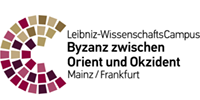TSP Contact and Discourse within Christianity (2015-2019)
Byzantium, the Latin West and the Slavic World
Even after the demise of the Western Roman Empire in AD 476, the intimate relations between Western and Eastern Roman/the Byzantine Empire were sustained. Rome, Ravenna and especially Southern Italy had long before been subjected to Byzantine suzerainty and the papacy continued to exercise a leading role in the imperial Church. Aside economic and political relations, those of the church were particularly significant. Suffice it here to mention diplomatic activities of the Latin and Orthodox churches, intensifying controversies over theological, jurisdictional and liturgical issues, and the lively artistic exchange. If at a clerical level, the crusades prompted the conclusive formation and fixation of the schism between Latin and Greek-Orthodox Churches, the confrontations, contact and exchange with the Roman church were thence fuelled further still.
Clerical contacts therefore constitute a fundamental constant in the relations between Byzantium and the Latin West. The same can be said for the Slavic world. The cultural and religious assimilation was a lengthy process when Byzantium had to deal with the Slavic groups beginning as early as their first invasion into the Balkan in the 6th century. The Latin expansion and the ascension of the Ottomans in the 14th and 15th centuries debilitated the Byzantine Empire, at first fostering Slaw strains for independence, but once Constantinople was conquered in 1453, the entire Balkans were subjected to Ottoman rule. The reception and survival of Byzantine culture nonetheless outlasted the end of the Byzantine Empire, with the Orthodox Church playing a crucial role for the transmission of Byzantine culture. Especially the 19th and 20th centuries display this tendency / fact.
Our research project is directed towards interdisciplinary, comparative examinations of forms, practices and discourses of intercultural exchange between Byzantium and the Latin and Slavic world. Further, the focus will be on the church as an institution, since it displays especially intense relations both with the Latin West as with the Slavic world over a long period of time. In addition, the church exerted considerable influence in other areas such as the political, social, cultural and artistic fields and thus assumed a particular position in intercultural contact.
The intensity of this exchange is analysed in case studies of different regions and period. For this purpose, an interdisciplinary group has been formed to carry out 14 case studies, which are, in turn, organised thematically into three work groups. On the basis of written, archaeological and pictorial sources, five specific aspects will be prioritised:
- Forms and dynamics of contact: This aspect intends to precisely differentiate the situation of contact which should allow conclusions on the scope of action and interests of the involved groups. In which ways, on which occasions, to which ends and with which intentions did which groups come into contact?
- Media of contact: Do oral communication, written texts, art works or other artefacts mediate the contact?
- The transfer of knowledge on the other: In the areas of ecclesiastical history, theology, liturgical and canonical issues, and art, what was known about the other? What was this knowledge based on, how was it construed, accessed and used?
- Formation of identity: How was the religious identity of Byzantines, Slaws and Latins constructed in discourse with the other? How was this construction maintained over a long period of time, or alternatively, how was it adapted to changing circumstances? Which role did the church play in group specific formations of identity?
- Considering the reception of the above four phenomena: How were older concepts and estimations perceived, summoned, reformulated and instrumentalized for new purposes in the post-Byzantine period?
Of overarching interest is the question of value and function of knowledge and identity: What was the value and what was the function of the accumulation and construction of knowledge? Which significance was attributed specifically to religious identity in contact with the Latin West and the Slavic world? What was the relationship between religious identity and the birth of regional or even transregional order and designs of order?

(Abb.:.: A. Pinelli, La Basilica di San Pietro (Modena 2000), S. 261).
Contact Persons
Work groups
Religious practice and cultural knowledge
Transformation, integration and cultural differences
Activities
Workshop: Practice, Knowledge and Communication in Interreligious relations.
Interdisziplinäre Ringvorlesung: »Kulturkontakte: Byzanz und der Westen. Konzepte und Fallstudien«
Tagung: Religious Exchange and Identities in Europe Byzantium, the Latin West and the Slavic World.












